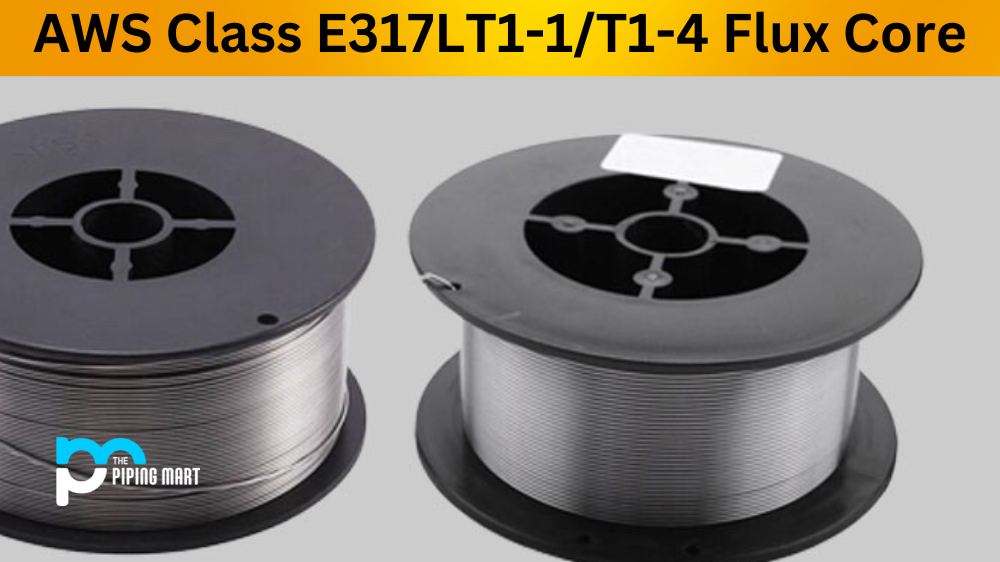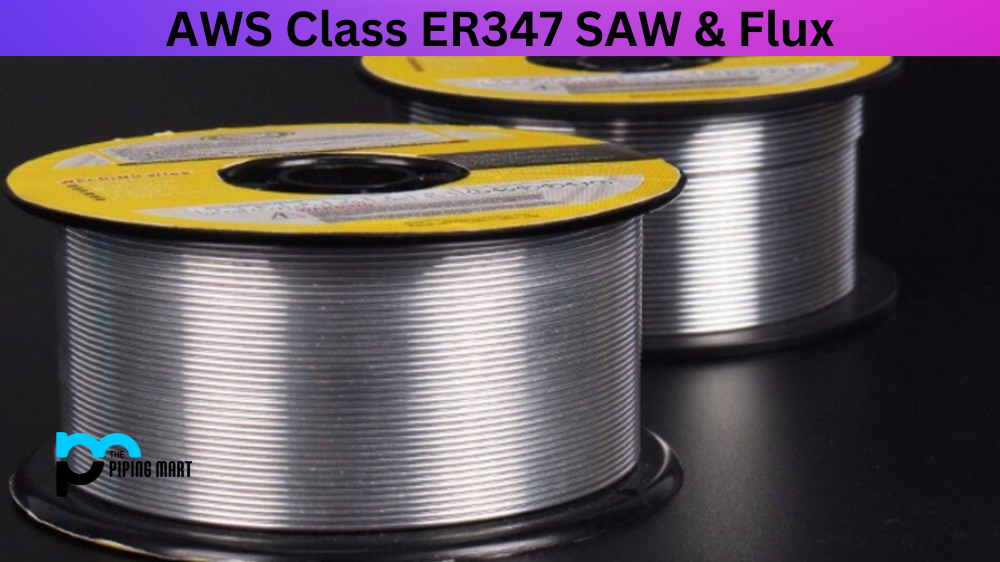Welding is an integral part of the manufacturing industry, and choosing the right welding wire is crucial to achieving the desired results. AWS Class E317LT1-1/T1-4 Flux Core welding wire is popular for various welding applications. In this blog post, we will discuss what AWS Class E317LT1-1/T1-4 Flux Core welding wire is, its composition, physical and mechanical properties, uses, and heat treatment. We will also look into the corrosion resistance of this welding wire.
What is AWS Class E317LT1-1/T1-4 Flux Core?
The AWS Class E317LT1-1/T1-4 Flux Core welding wire is a stainless steel flux-cored wire used for welding austenitic stainless steel. It is classified as per the American Welding Society (AWS) standards. The “E” in the code stands for electrode, and the “317” denotes the type of stainless steel electrode belonging to austenitic chromium-nickel stainless steel. The “T1-1/T1-4” is the flux classification, indicating the slag’s performance regarding its weldability.
E317LT1-1/T1-4 Flux Core Welding Wire Composition
The Flux Core welding wire’s composition consists of 18% chromium, 12% nickel, and 3% molybdenum, making it an excellent choice for welding alloys and maintaining their strength at high temperatures. The liner inside the wire is made of stainless steel to prevent rust formation. The flux in the wire contains a mixture of elements, such as silicon, manganese, and aluminium that protects the weld pool from atmospheric contaminants.
| C | Cr | Ni | Mo | Mn | Si | P | S | Cu |
| 0.04 | 17.0-20.0 | 11.0-14.0 | 2.0-3.0 | 0.5-2.5 | 1.0 | 0.04 | 0.03 | 0.75 |
E317LT1-1/T1-4 Flux Core Coated Wire Physical Properties
The physical properties of AWS Class E317LT1-1/T1-4 electrode are remarkable. It has a high resistance to surface oxidation, and the liner protects the wire’s interior from rust formation, preserving the wire’s strength and durability. It is also easy to handle and has excellent weldability with a smooth arc transfer.
E317LT1-1/T1-4 Flux Core Welding Wire Mechanical Properties
The mechanical properties of the AWS Class E317LT1-1/T1-4 Flux Core welding wire are also highly desirable. It has high tensile strength, excellent creep resistance, and toughness at low temperatures. The weld metal has low carbon content, which makes it less susceptible to sensitization and intergranular corrosion.
| Tensile Strength, kpsi: | 70 min |
| Yield Strength, kpsi: | *NS |
| Elongation %: | 30 min |
E317LT1-1/T1-4 Flux Core Coated Wire Trade Names
| Class | UNS | Oxford Alloys | BOHLER |
| E317LT1-1/T1-4 | W31735 | Alloy 317LT1-1/4 | BOHLER E317L PW-FD |
E317LT1-1/T1-4 Flux Core Welding Wire Wire Parameters
| Diameter | Process | Volt | Amps | Shielding Gas | |
| in | (mm) | ||||
| .035 | (.9) | GMAW | 26-27 | 150-165 | 100%CO2 |
| .045 | (1.14) | GMAW | 26-28 | 160-200 | 100%CO2 |
| .063 | (1.6) | GMAW | 27-28 | 215-250 | 100%CO2 |
E317LT1-1/T1-4 Flux Core Coated Wire Uses
AWS Class E317LT1-1/T1-4 filler metal primarily uses welding and cladding austenitic stainless steel components in various industries. It is ideal for manufacturing equipment and machinery that operates at high temperatures, such as boilers, heat exchangers, and petrochemical plants. It is also suitable for welding stainless steels that are difficult to weld with conventional methods.
E317LT1-1/T1-4 Flux Core Welding Wire Heat Treatment
Heat treatment of AWS Class E317LT1-1/T1-4 depends on the specific application and the requirements of the welded component. Following the recommended heat treatment procedures is essential to achieve the desired results.
E317LT1-1/T1-4 Flux Core Coated Wire Corrosion Resistance
Corrosion resistance is crucial when choosing a welding wire for specific applications. AWS Class E317LT1-1/T1-4 filler wire has excellent resistance to general and pitting corrosion, making it well-suited for corrosive environments.
Conclusion
AWS Class E317LT1-1/T1-4 Flux Core welding wire is a high-quality welding wire that offers superior physical and mechanical properties. Its excellent weldability, corrosion resistance, and high-temperature capabilities make it an ideal choice for various industrial applications. As with any welding process, it is crucial to follow the recommended procedures to attain the desired results. Choosing the right welding wire ensures that your welded components are robust, durable, and safe.

Meet Bhavesh, a seasoned blogger with a wealth of knowledge and experience. From metal products manufacturing to retail, Bhavesh has a diverse background in various industries and is dedicated to sharing his insights and expertise with readers.




